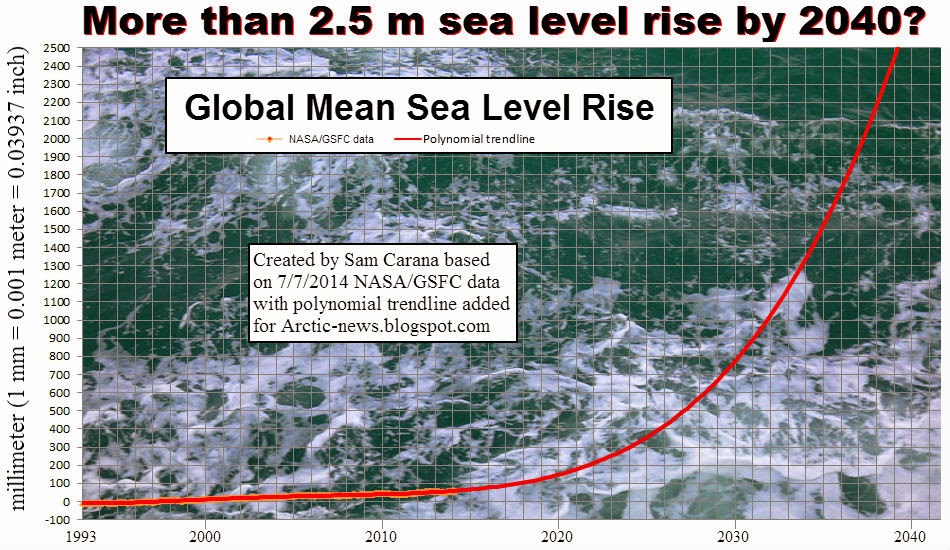 |
| [ click on image to enlarge ] |
One such feedbacks has been coined the ‘open doors feedback’. Indeed, the situation is much like leaving the fridge door open. This allows cold air to more easily move out of the fridge, i.e. the Arctic, resulting in the cold temperatures over North America that have received extensive news coverage in the media. At the same time, warm air can move more easily into the fridge, i.e. the Arctic, and this is one of the reasons why the Arctic is hit by temperatures that are so much higher than what used to be normal.
The situation has been described in a number of earlier posts such as this one, as well in a recent interview with Jennifer Francis. As the Arctic warms more rapidly than the rest of the world, there's less temperature difference between the Arctic and the equator, resulting in the jet stream going around the globe at a lower speed with more elongated loops.
The left chart on above image shows such an elongated loop going north along the east coast of Greenland, then bending before Scandinavia and moving over the north of Greenland, then going around the North Pole and moving back to Scandinavia. This loop is not very visible on the chart, because the jet stream moves faster along straight tracks, and this chart highlights wind speed more than it highlights the path of the jet stream. Yet, the shape of this loop is very important, as it traps warmer air north of Greenland.
BTW, a weaker jet stream also elevates the chance of heat waves elsewhere, which can indirectly warm up the Arctic. Examples of this are heat waves over the Gulf Stream as it crosses the Atlantic Ocean, resulting in warmer water being carried into the Arctic Ocean, and heat waves over Siberia and North America, resulting in warming up of rivers that end in the Arctic Ocean.
Anyway, to get back to the current heatwave, there are a number of reasons why temperatures in the Arctic are so high at the moment. One of the biggest reasons is ocean heat, which has reached very high levels, especially in the North Atlantic, while the Gulf Stream keeps transporting warmer water from the North Atlantic into the Arctic Ocean (i.e. water that is warmer than the water in the Arctic Ocean). This warms up the seafloor of the Arctic Ocean, resulting in methane erupting from the seafloor, with a strong immediate local warming impact in the Arctic, thus further accelerating warming in the Arctic in another one of these self-reinforcing feedback loops, as pictured in the image below.
Further feedbacks that accelerate warming in the Arctic are discussed at the feedbacks page.
Without effective and comprehensive action, these feedbacks threaten to lead to runaway warming, i.e. abrupt climate change causing mass death and destruction, and resulting in extinction at massive scale, as depicted in the image below and as described in this earlier post.
In conclusion, the situation is dire and calls for comprehensive and effective action, as discussed at the Climate Plan blog.
Post by Sam Carana.
















